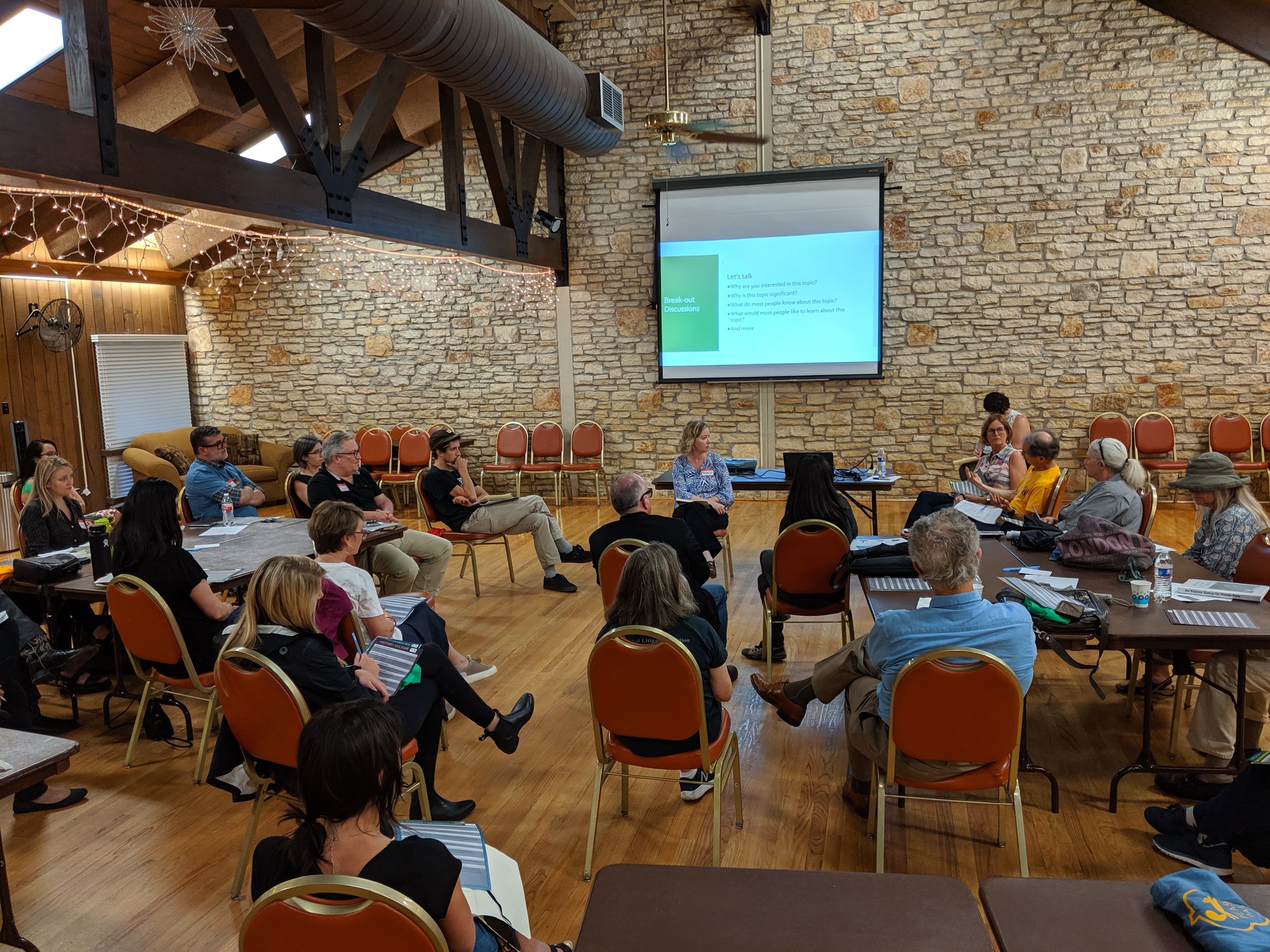Past, Present, Future
Guest Blog Post by Frank Walsh
While picnicking in Pease Park you may well be enjoying some of the same space Lt. Colonel George Custer and his troops used as a campground in 1865-1866.
Or biking, jogging or walking, you have to make a sharp 90-degree turn to navigate Split Rock between 24th and 29th streets where a huge boulder split in two forming a forty-foot deep canyon where, it is believed, Sarah Hibbins escaped her captors in 1835 while camping on the rock.
Signs and illustrations in Pease Park tell each of these stories – a part of interpreting the history, culture and environment to help visitors better understand and relate to their surroundings. About 30 people attended a recent community gathering to contribute their insights for a more comprehensive Interpretive Master Plan for Pease Park.
“Comprehensive,” a tricky word. “Change” not so tricky. You cannot change the history of the park – document and tell the story – the Colonel Custer story. The “present” or “now” are fluid providing time and space to design important elements of the Park’s geology, hydrology, history, culture, and environment into that comprehensive “action” plan.
Just another meeting, another plan – what will it matter?
A meeting itself is often a good indication of whether “it will matter?” As with four other tables, I sat with five other individuals I had not met before – an impressive diversity of ages and backgrounds, with one exception – they all knew and appreciated Pease Park. One person was a board member of Pease Park Conservancy, another had sculpted a three-foot high statute of Eeyore and thought it belonged in Pease Park where Eeyore’s birthday is celebrated every year.
Next, we reviewed and discussed 24 different elements of the park’s history, geology and environment. Then we were asked to use the six blue, round stickers we were given to vote for the six elements we believed most important to any plan. We gathered around the big board as the blue votes were tallied.
And then Angela Davis, a member of the Interpretive Plan consultant team, asked us to pull our chairs closer to the front of the room so everyone could hear the discussion on the elements receiving the most votes.
For example, fossils from an ancient sea, along with the Balcones Fault Zone, ranked high under geology.
Slavery on the Pease plantation, nearby Freedmen’s communities, and nearby neighborhoods enforcing segregation, ranked high under history and culture.
Under the environment, “plants of Pease Park,” water quality, and restoring the ecosystem collected the most votes.
Personal history, high-level energy, sharing, discussion, collective decision making made this much more than “just another meeting.” But will “it matter?”
The difference between the present and the future is us – yes, we are the “action” part of the plan. And yes, “us” and “we” are illusive until the “us” and “we” become Jayden, Gabrielle, Maria, Peter . . . , and of course you!





